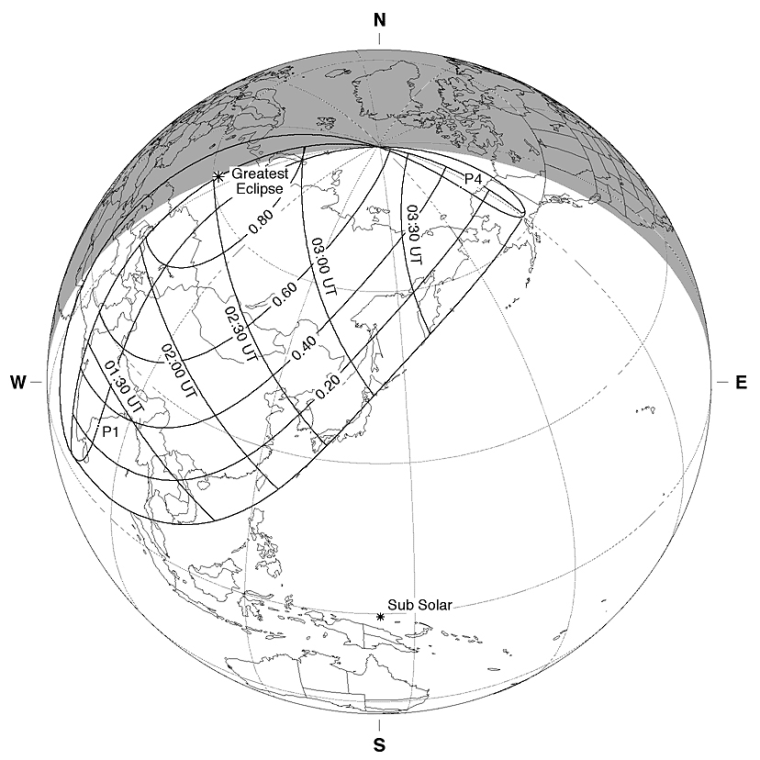The first solar eclipse of 2007 takes place March 18-19 and will treat selected skywatchers in parts of Asia.
The alignment between the sun, Earth and moon is not, however, exact enough to produce a total eclipse. The moon’s apparent position in the sky relative to the sun will be displaced somewhat to the north. So only the southern portion of the moon’s outer shadow (the penumbra) will touch Earth, while the dark, narrow cone of the umbra completely misses Earth and swings 288 miles (463 kilometers) above the Ural Mountains of western Russia.
Only by flying to that height would you be able to see the sun totally obscured by the moon.
The partial eclipse will be visible from much of Asia, with the exceptions of the Philippines, Indonesia and most of Japan’s Honshu Island. See the table below for specific local circumstances.
The penumbral shadow first touches Earth in the Bay of Bengal, just off of the Coromandel Coast of India at 0038 GMT (also known as Universal Time, or UT). It then sweeps up in a north-northeast direction, covering most of Asia by 0200 GMT. The point of greatest eclipse occurs at 0232 GMT over Russia’s Perm Region, about 200 miles (320 kilometers) north of the Capital of Perm and not far from the town of Krasnovishersk, which is known for geological prospecting, discovery and exploitation of alluvial diamond deposits.
Hardy observers who are up at dawn in this part of Russia (the sun rises around 7:30 a.m. local time) will witness — should weather conditions permit — a striking sunrise eclipse with 87.4 percent of the sun’s diameter hidden by the passing new moon. The sun will emerge dramatically from beyond the eastern horizon resembling a delicate crescent with its cusps pointed up and tilted slightly to the right.
The penumbra will continue to pass over the Arctic, and in the process crosses the International Date Line going eastbound. As a consequence, the local date of the eclipse falls back a day, to March 18. As the moon's shadow slides off Earth’s surface, it ends up brushing northern and central Alaska. Observers there would see a small bite taken out of the sun’s upper right limb right around local sunset.
So here is an oddity: an eclipse that ends on the day before it starts!
The eclipse ends when the penumbra leaves Earth's surface along the sunset terminator in the Arctic Ocean north of Point Barrow, at 0425 GMT. Local circumstances of the eclipse, which have been computed for 12 localities, can be found in the table below.
Times given correspond to the local time zone observed at each location. All times are for the calendar date of March 19, except those for Fairbanks, which are in italics and are valid for the previous day, March 18. If first contact occurs when the sun is below the horizon, then the time of local sunrise is given in parentheses instead; the eclipse will already be in progress at that time.
For Fairbanks, double parentheses under the time of last contact is for the time of local sunset. The eclipse will still be in progress at that time.
